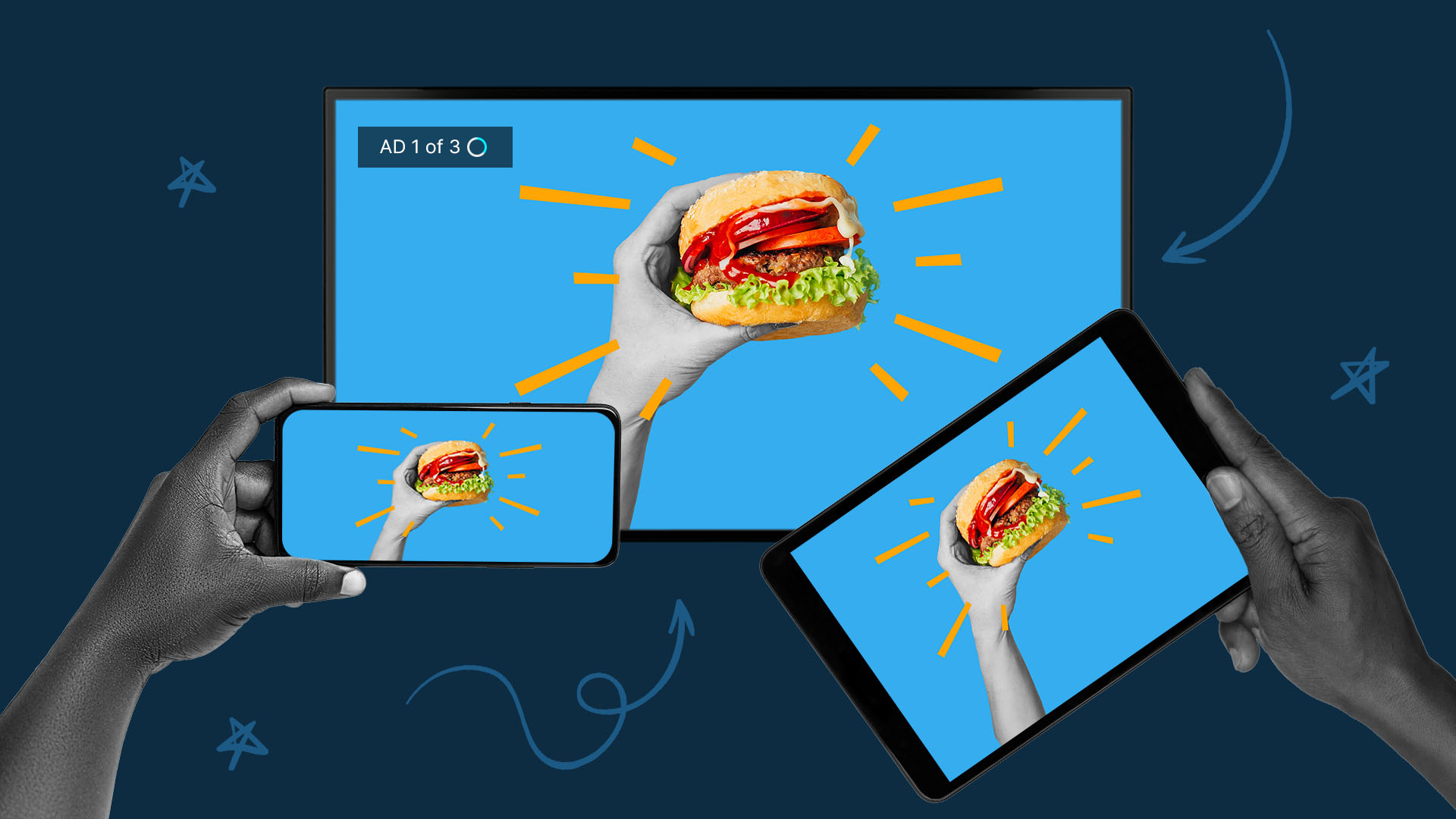Video Marketing & COVID-19: Why Brands Need to Act Now

The COVID-19 pandemic has completely and immediately upended human behavior with important implications for marketers. Stay at home directives are largely being heeded and we are spending much more time hanging out on our couches than ever before.
What hasn’t changed, though, is the human desire for entertainment. And with most outlets (i.e., restaurants, theaters, etc.) temporarily shuttered, we’ve been turning to devices to search for stimulation, catalyzing video consumption trends that were already on the climb before the start of this year.
Learn More: Social Media Video Ad Specs & Placements Guide
The Data is Unanimous: People Love Video Content
According to the Global Web Index, over 80% of consumers in the US and the UK say they’ve consumed more content since the outbreak. Broadcast TV and online videos (including OTT and social media platforms) are the primary mediums of choice and the trend holds across all audience cohorts. Of particular note is the wide adoption of online video: 51% of Gen Z (16-23 years old), 44% of Millennials (24-37 years old), 35% of Gen X (38-56 years old), and 11% of Boomers (56-64 years old) indicated that they have started consuming or are consuming more online video since the start of the pandemic.
OTT and social media consumption data have further corroborated these survey results, confirming that we’re all watching a ton of video right now. Data in from Nielsen a few weeks ago put the total streaming minutes in the third and fourth weeks of March at 168.7 billion and 161.4 billion, respectively—a more than double YoY growth. People are understandably craving entertainment right now and are hunkering down for long content-consumption sessions. Part of the massive growth in streaming minutes is a result of an increase in binge-watching, which was already on the rise before the outbreak and is likely to be a habit that sticks once the crisis concludes.
As for social media, usage across all apps is surging. Humans are seeking connectivity right now, and the primacy of video as the medium of choice is evident:
- TikTok, a platform centered squarely in video, is trending in a major way. It was #1 in the Apple App Store for most of March before recently dropping to #3.
- The #1 and #2 spots are currently held by Zoom and Houseparty, respectively—two video conferencing platforms.
- Snapchat has grown its active daily users by 20% to 229 million. Snaps sent on Snapchat reached an all-time high in March and the time users spent playing with lenses was up 25%
- 63.2% of respondents in a recent Statista survey indicated that they are using Facebook more.
- Pinterest has also seen major growth. Pinterest peaked in late March, with searches up 60% YoY. There has also been a 3X increase in Pin video views since March 1.
For more data on social media consumption trends, check out our webinar with Tinuiti on remaining relevant during a global pandemic.
What This Means for Marketers: Harnessing Video to Retain Your Customers
The general rise in video consumption shouldn’t be news to many. It’s been evident for many years now that consumers far prefer video to text, and video’s dominance as a communication and entertainment medium was already well underway. What is incredibly noteworthy, though, are the numbers above, which capture the sheer speed at which people have flocked to video in the past weeks.
And the love for video is likely to stay, even as we begin resuming some semblance of normality in the coming months. The bets on video adoption have already been staked, as evidenced in part by the slew of streaming platforms set for release. Quibi went forward with their planned launch on April 6, NBC launched a preview of its Peacock to Comcast users ahead of a July launch, and HBO Max just set an official launch date of May 27.
With consumers living so much of their lives on video platforms, one thing is extremely clear: brands need to be producing more video, and that video needs to be platform-specific.
Video consumption is spread across so many different platforms, with more coming. Each offers unique value to its audience—and a standalone experience. The worlds of TikTok and Hulu, as an example, are disparate. Video marketing must adhere to the rules and feel of the world in which it runs in order to maximize its effectiveness.
RELATED: Drive Performance in Your Organic Social Media With Video Intelligence
Even in the current climate, consumers do want to be hearing from brands, and the marketing you do now can safeguard your business in the long-term. Your fans want to hear from you on a number of fronts: some are interested in information about your business’ role in the pandemic and others are craving a sense of normalcy, seeking reassurance from the brands they love.
The advertising landscape has made it incredibly advantageous to reach your audience at this time. CPMs are down with not much competition in the market, offering a prime opportunity to deploy a variety of video campaigns to reach your target audience through social media and OTT advertising. There are many remote production options available to produce relevant, targeted creative, even now. Consider producing UGC-style content that can be filmed by a single maker remotely, leveraging animation, or repurposing existing assets.
The brands that continue to engage and delight their audiences will stay top-of-mind for consumers through this period of uncertainty. There will be a return to normal, and it’s these brands—those that are meeting audiences where they are now, through video—that are positioning themselves for a speedy recovery.
Do More with Video
Learn how we can help you produce more quality videos affordably and at scale.



